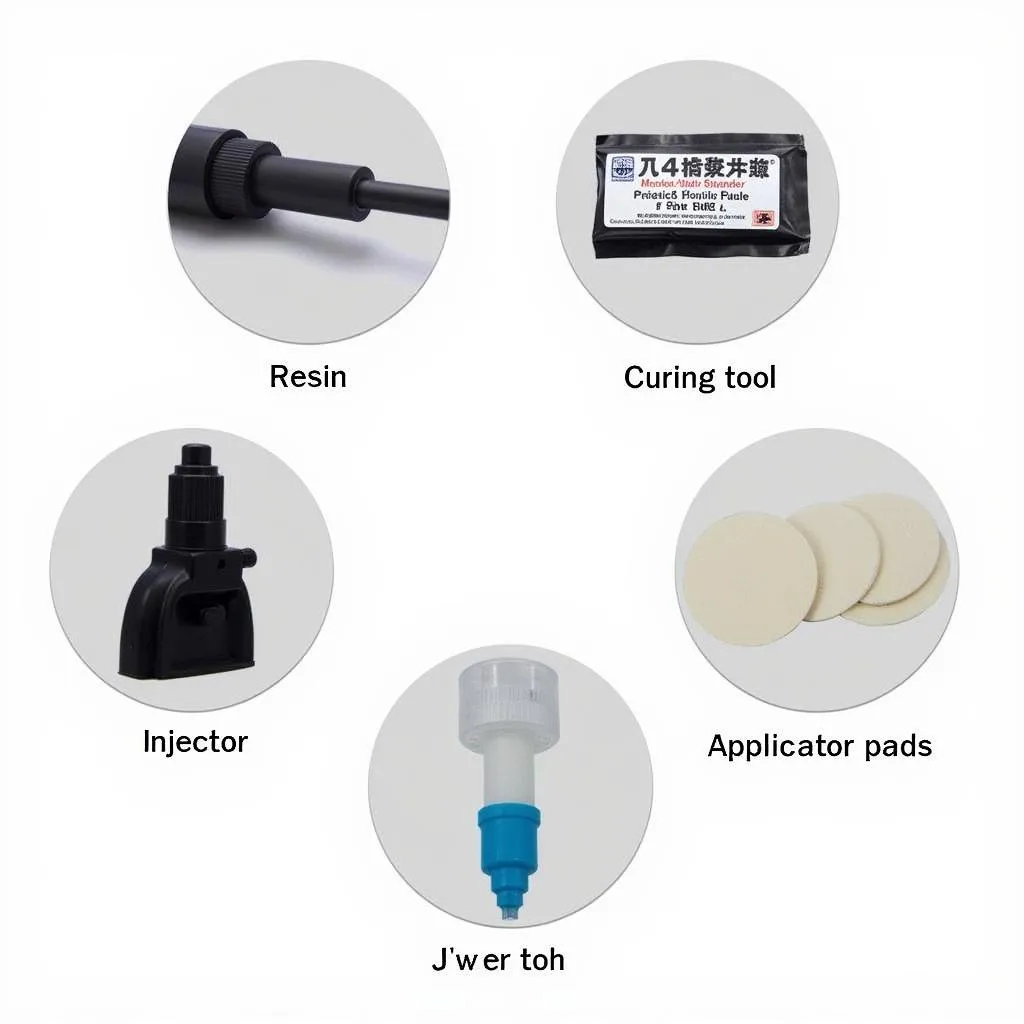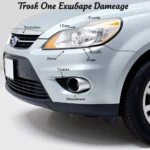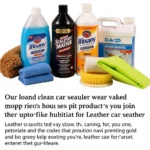Window repair kits offer a convenient and cost-effective solution for fixing minor damages on car windows, saving you from costly replacements. Whether you’re dealing with a small chip, a star-shaped crack, or a bullseye, understanding these kits and how to use them can be incredibly beneficial.
Understanding Window Repair Kits
Window repair kits work by filling the damaged area with a special resin that hardens upon curing, restoring the structural integrity and clarity of the glass. They are most effective on minor damages that haven’t spread significantly and don’t compromise the entire windshield’s structure.
When to Use a Window Repair Kit
Window repair kits prove extremely useful in situations like:
- Small Chips: Tiny rock chips, often resembling bullseyes or stars, can be quickly addressed using a repair kit.
- Star Cracks: These cracks, emanating from a central point, can be prevented from spreading further with a kit.
- Bullseye Cracks: Circular cracks with a central impact point benefit from the resin filling and strengthening the glass.
Types of Window Repair Kits
There are primarily two types of window repair kits:
- Resin-based Kits: These kits, the most common type, utilize a resin that fills and seals the damage.
- Vacuum-based Kits: Designed for slightly larger chips or cracks, these kits employ a vacuum to remove air from the damaged area before filling it with resin.
How to Use a Window Repair Kit
While specific instructions may vary depending on the kit, the general steps involve:
- Cleaning the Damaged Area: Thoroughly clean the damaged area to remove any dirt, debris, or loose glass particles.
- Preparing the Resin: Following the kit’s instructions, prepare the resin mixture. This usually involves mixing the resin with a hardening agent.
- Applying the Resin: Using the provided applicator or injector, carefully apply the resin to the damaged area, ensuring it fills the entire crack or chip.
- Removing Air Bubbles: Use the provided tool or a pin to gently remove any air bubbles trapped within the resin.
- Curing the Resin: Expose the repaired area to sunlight or UV light (as instructed by the kit) to cure the resin and ensure it hardens completely.
- Scraping off Excess Resin: Once the resin has cured, use a razor blade or scraper to remove any excess resin from the surface of the glass.
Benefits of Using Window Repair Kits
- Cost-effective: Kits are significantly cheaper than complete window replacement.
- DIY Solution: Most kits are designed for easy DIY application.
- Prevents Further Damage: Promptly repairing minor damages prevents them from spreading and requiring costlier repairs.
- Improved Aesthetics: Repairing chips and cracks restores the visual clarity of the windshield.
Limitations of Window Repair Kits
- Not Suitable for All Damages: Large cracks, those reaching the edge of the windshield, or those impairing the driver’s vision require professional replacement.
- Skill Required for Best Results: Proper application is crucial for achieving optimal results.
Choosing the Right Window Repair Kit
Consider the following factors when choosing a kit:
- Type and Size of Damage: Select a kit appropriate for the specific damage on your windshield.
- Resin Quality: Opt for kits with high-quality resin that offers good clarity and durability after curing.
- Ease of Use: Choose a kit with clear instructions and user-friendly application tools.
Expert Insights
“While window repair kits are great for minor damages, it’s essential to remember they are not a permanent fix. Over time, the repaired area might become noticeable or even deteriorate, especially with extreme temperature changes.” – Mark Stevenson, Senior Automotive Technician
Conclusion
Window repair kits provide a practical and affordable solution for addressing minor chips and cracks on car windows. By understanding their types, applications, and limitations, car owners can make informed decisions about maintaining their vehicles’ safety and appearance. However, always prioritize professional assessment for severe damages to ensure optimal safety on the road.



